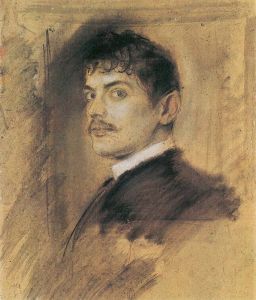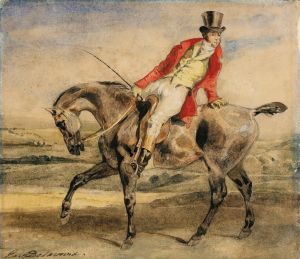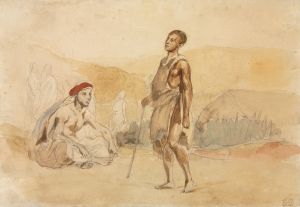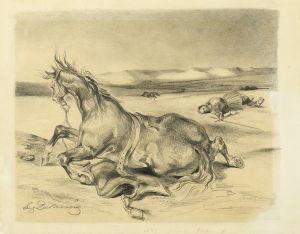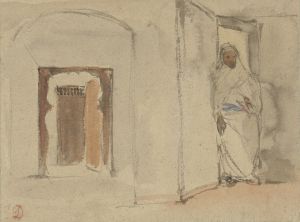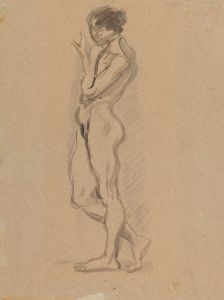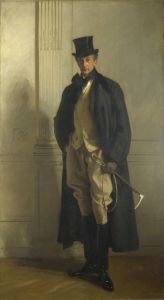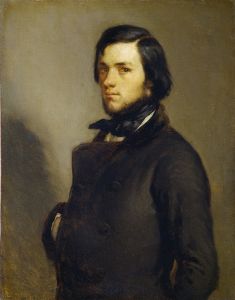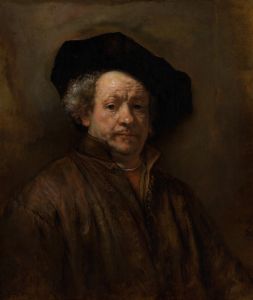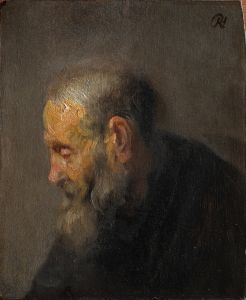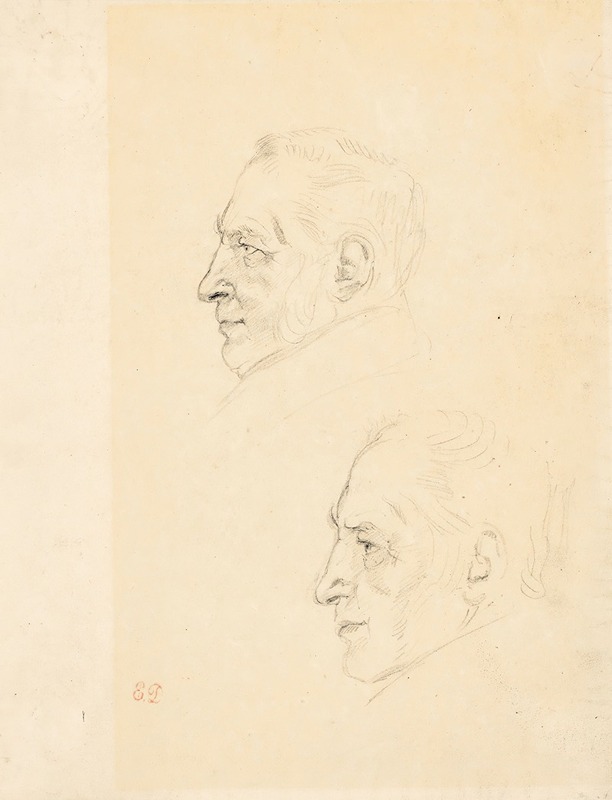
Tête d’homme
A hand-painted replica of Eugène Delacroix’s masterpiece Tête d’homme, meticulously crafted by professional artists to capture the true essence of the original. Each piece is created with museum-quality canvas and rare mineral pigments, carefully painted by experienced artists with delicate brushstrokes and rich, layered colors to perfectly recreate the texture of the original artwork. Unlike machine-printed reproductions, this hand-painted version brings the painting to life, infused with the artist’s emotions and skill in every stroke. Whether for personal collection or home decoration, it instantly elevates the artistic atmosphere of any space.
Eugène Delacroix, a leading figure of the French Romantic movement, is renowned for his expressive brushwork and vibrant use of color. Among his many works, "Tête d’homme" stands out as a compelling example of his skill in portraiture and his ability to capture the essence of his subjects. This painting, whose title translates to "Head of a Man," is a testament to Delacroix's fascination with human emotion and character.
"Tête d’homme" is a study of a male head, showcasing Delacroix's mastery in rendering human features with both precision and emotional depth. The painting is characterized by its dynamic brushstrokes and the rich, warm palette typical of Delacroix's work. The subject's face is depicted with a sense of immediacy and vitality, reflecting the artist's interest in capturing the transient expressions and moods of his sitters.
Delacroix's approach to portraiture often involved a loose, almost sketch-like technique, which is evident in "Tête d’homme." This method allowed him to convey a sense of movement and life, as if the subject might turn or speak at any moment. The painting's composition focuses closely on the head, with little distraction from background elements, drawing the viewer's attention to the subject's intense gaze and expressive features.
The Romantic movement, of which Delacroix was a central figure, emphasized emotion, individualism, and the sublime. "Tête d’homme" embodies these principles through its exploration of the human psyche and its emphasis on the emotional state of the subject. Delacroix's ability to infuse his portraits with a sense of drama and narrative is evident in this work, as the viewer is left to ponder the thoughts and feelings of the man depicted.
While specific details about the identity of the subject in "Tête d’homme" are not well-documented, the painting reflects Delacroix's broader interest in diverse character studies. Throughout his career, Delacroix was known for drawing inspiration from a wide range of sources, including literature, history, and his travels. This openness to various influences is reflected in the diverse range of subjects he chose to portray.
Delacroix's influence on the art world extends beyond his own time, impacting subsequent generations of artists. His innovative use of color and expressive technique paved the way for later movements such as Impressionism and Post-Impressionism. "Tête d’homme," with its bold execution and emotional resonance, exemplifies the qualities that have made Delacroix's work enduringly influential.
In summary, "Tête d’homme" by Eugène Delacroix is a striking example of Romantic portraiture, capturing the complexity of human emotion through dynamic brushwork and a rich color palette. Although specific details about the painting's subject remain elusive, the work stands as a testament to Delacroix's skill and his lasting impact on the art world.





